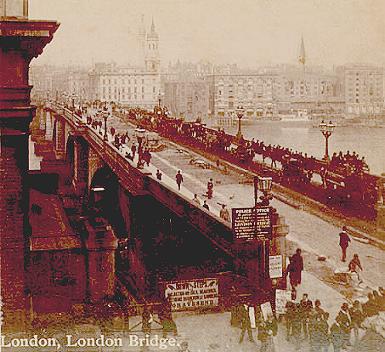
Slicing the city of London into two halves, the River Thames has been the spirit of London since the Roman Empire founded the City of Londonium on its banks. Over the years a number of bridges have built to connect the two parts of London enabling trades and flow of population.
Most famous of all is the Tower Bridge which became the symbol and icon of London, and a less beautiful and equally historical the London Bridge in the foot of the amazing Shard tower. However very few people knew that fact that in an interesting turn of events, one of the bridges in London was bought and transported to America four decades ago.
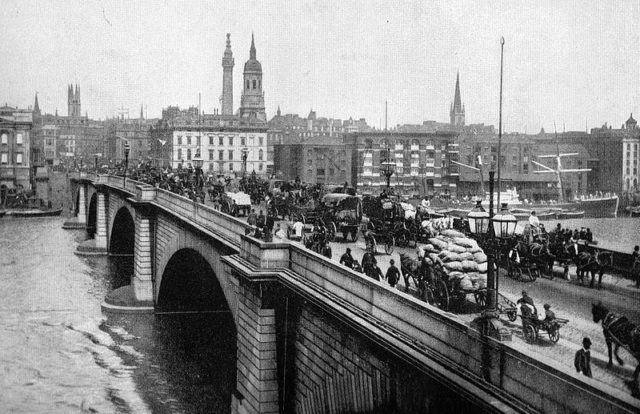
In 1962 the engineers working on the maintenance of the many bridges in London found out that one of the bridges was collapsing under the ever increasing weight of automobiles crossing over in thousands every day. The city officials and the engineers faced a predicament to come up with a solution which was less economically damaging. The officials came up with a brilliant and then controversial ideas of putting the bridge on auction, yes ‘a bridge for auction’.
The man who won the bidding had it all planned prior to his success in the auction. Robert McCullough had the reputation of undertaking impossible projects and then somehow making them work. Mr. McCullough mostly made his buck manufacturing chainsaws, but he made the headlines when he bought the massive patch of dessert in Arizona, some 26 square mile of the barren land for just over $75 per acre. Naming his newly founded city the Lake Havasu City, he built a large chainsaw factory to attract population and growth; however he failed to achieve much success.
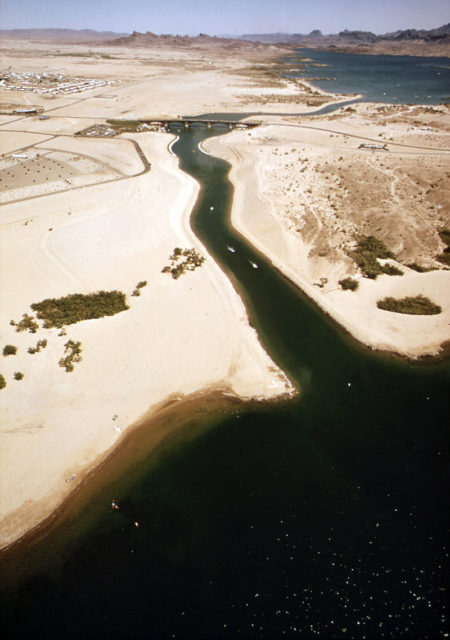
While Mr McCullough was pondering day and night on how to make his city stand out, he came across the news of London City officials putting up an 1832 bridge on auction. Mr. McCullough didn’t even flinch and leapt on the opportunity buying the 19th century Bridge of $2,460,000, and paid another $7 million to have it transported piece by piece to Arizona.
The purchaser, Robert P. McCulloch, the chairman of McCulloch Oil Corporation, was the founder of Lake Havasu City, his retirement real estate development on the east shore of Lake Havasu, a large reservoir on the Colorado River. McCulloch purchased the bridge to serve as a tourist attraction to Lake Havasu, which at that time was far from the usual tourist track. The idea was successful, bringing interested tourists and retirement home buyers to the area.
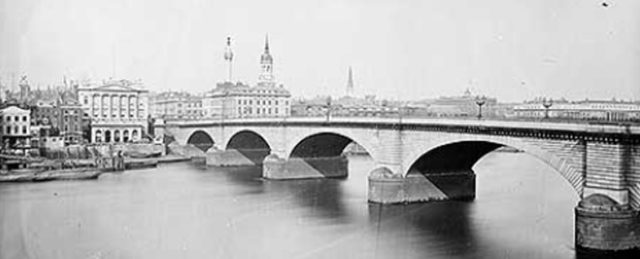
Originally, the deserted Lake Havasu vacant land was given to the state of Arizona by the U.S. federal government. The federal property was an abandoned landing strip for the military. McCulloch made a deal with the state government and received the property for free with a promise to develop the land.
The problem was that the real estate agents could not bring in prospective buyers, because the land was far from centers of population and had a very hot, arid climate. McCulloch’s real estate agent, Robert Plumer, learned that the London Bridge was for sale and convinced McCulloch to buy it and bring it to the area to attract potential land buyers.
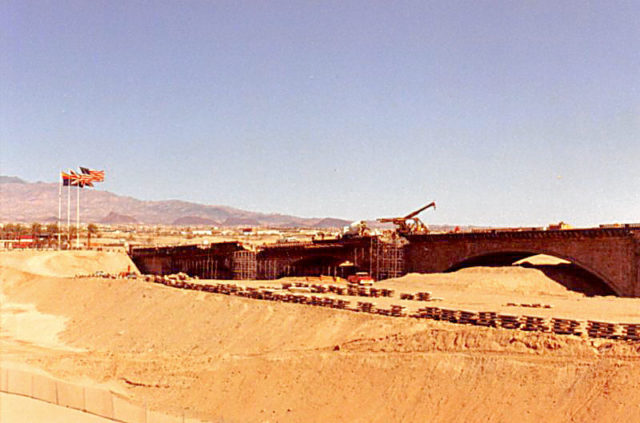
The initial response from McCulloch was, “That’s the craziest idea I have ever heard,” but after consideration, he decided to go ahead with the purchase. Plumer then arranged with a cargo shipping company that was going to sail a newly built ship from Great Britain to the United States without any cargo.
Plumer said they would pay for all operating costs of the sailing, which was far less than the going rate shipping costs. The bridge facing stones were disassembled and each was numbered. After the bridge was dismantled, it was transported to Merrivale Quarry where 5.9 to 7.9 inches was sliced off many of the original stones. The bridge arrived in pieces at the Port of Houston and then was transported overland to Lake Havasu City, where re-assembly began in 1968.
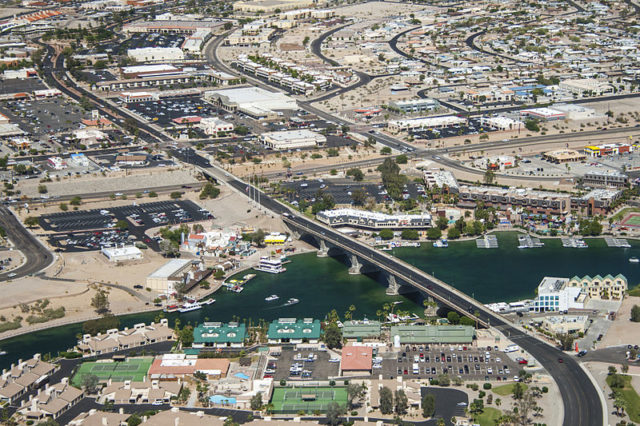
The original stonework was used to clad a new concrete structure. The bridge was not reconstructed over a river, but rather it was rebuilt on land in a position between the main part of the city and Pittsburgh Point, at that time a peninsula jutting into Lake Havasu.
Once completed, the Bridgewater Channel Canal was dredged under the bridge and flooded, separating Pittsburgh Point from the city, creating an island. The bridge thus now traverses a navigable shortcut between the Thompson Bay part of Lake Havasu south of Pittsburgh Point, and the remainder of Lake Havasu to the north.
After it was reconstructed, new prospective land buyers were interested in coming to see the London Bridge and take a tour of properties for sale. Land sales improved and McCulloch recouped all of his expenses for the purchase and shipping of the bridge.
Since the cost of the land was nothing, the sale of the properties paid for the bridge and more. Recent years have seen a large amount of development in the area of the bridge to increase tourist interest. The original “English Village”, a quaint English-style open-air mall with hedge maze and historical museum, has deteriorated, with sections leveled.
The bridge was then ‘implanted’ in the Lake Havasu City and the work finished by the fall of 1971. The inauguration of the London Bridge in Arizona was of epic proportions, news crews from all over country gathered to witness the one of a kind historic event.
The Mayor of London also showed up in the ceremony and took part in the colossal ceremonies that some newspapers wrote that it seemed as if Richard the Lion heart was returning from the Crusades and people had gathered to welcome him back home.
Unfortunately Mr. McCullough died six years after the inauguration, the London Bridge of Arizona and the city he built still stand as one of the biggest tourist attractions in Arizona.